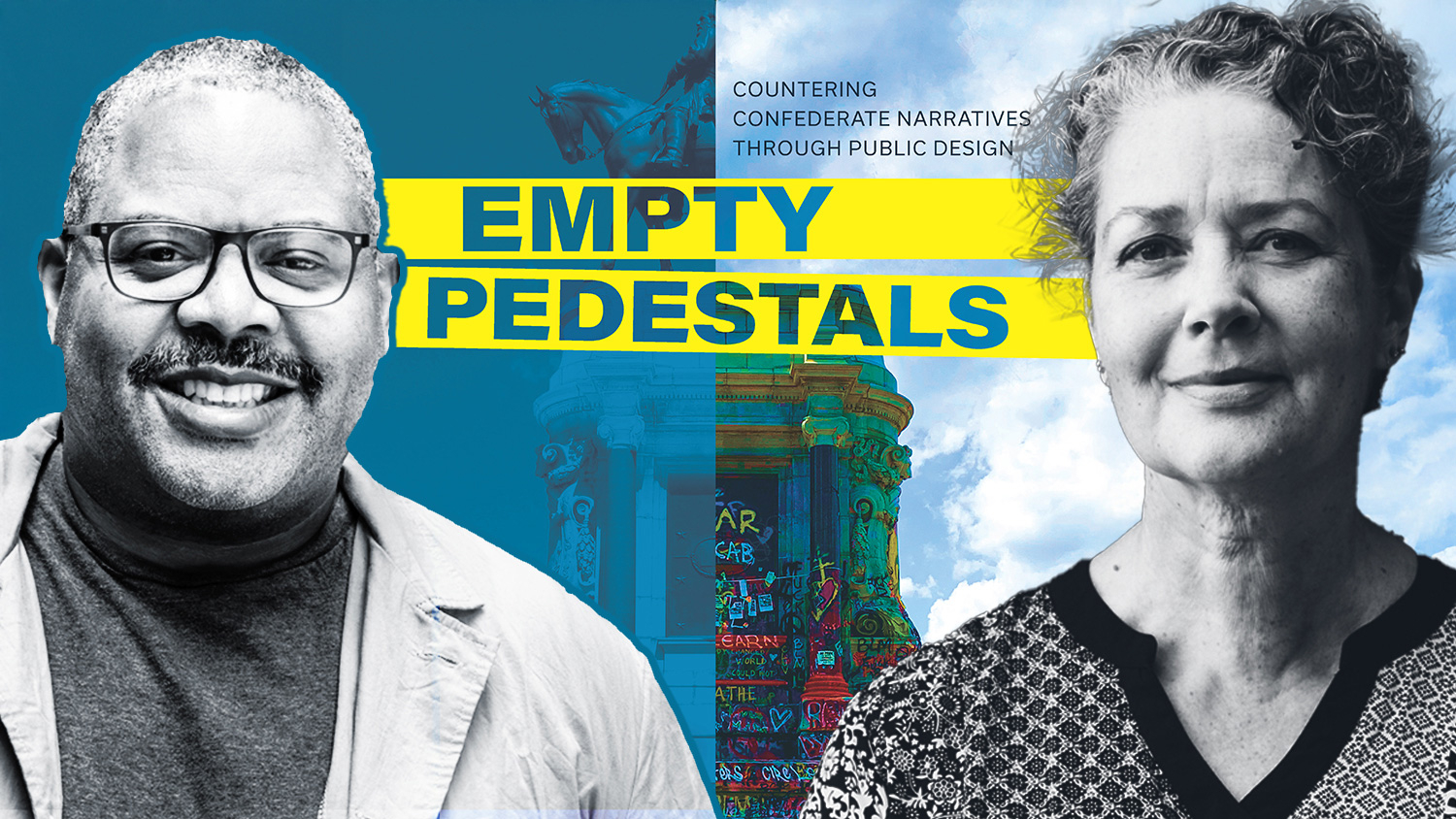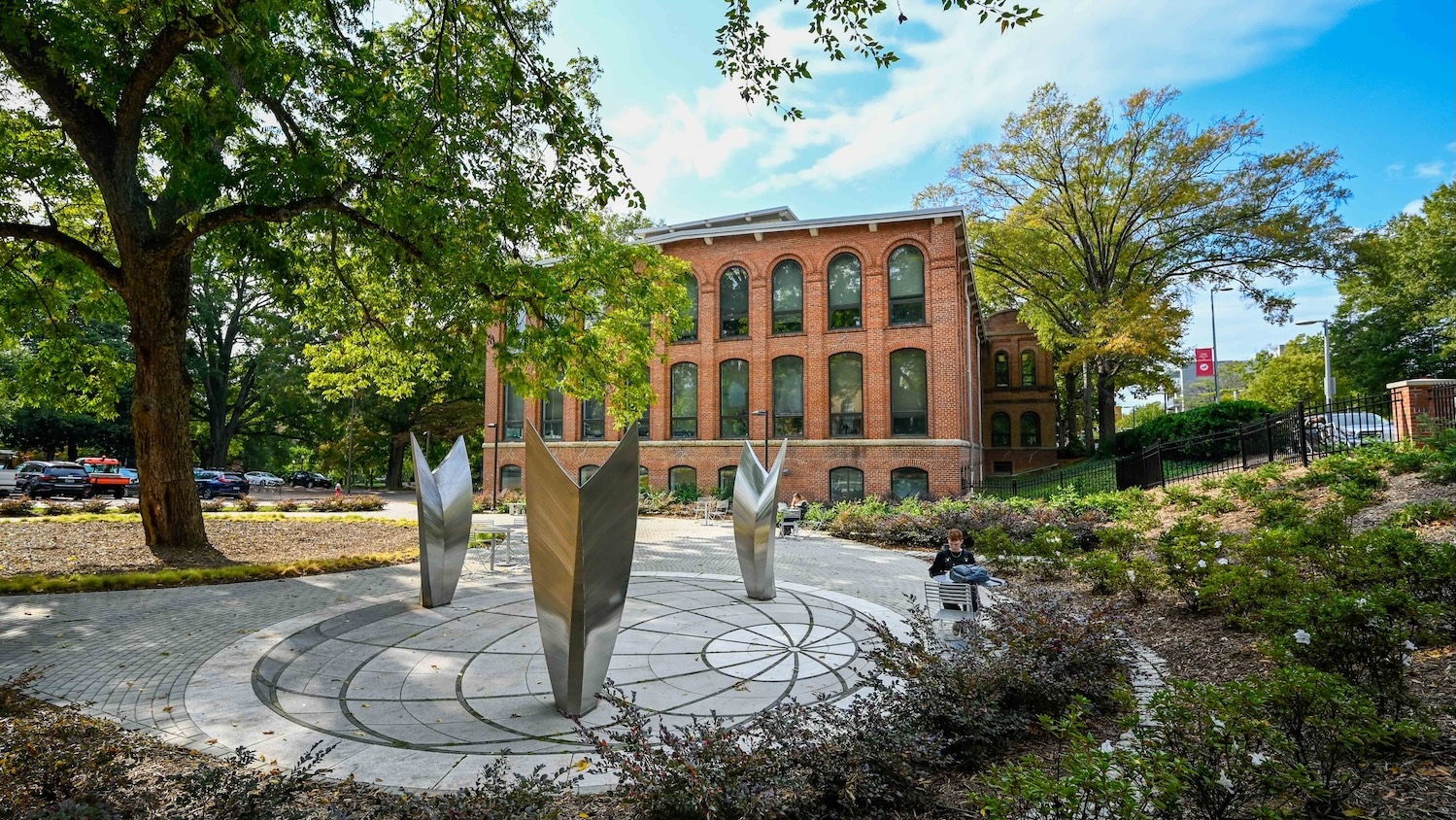Healthy Kids: No Batteries Required
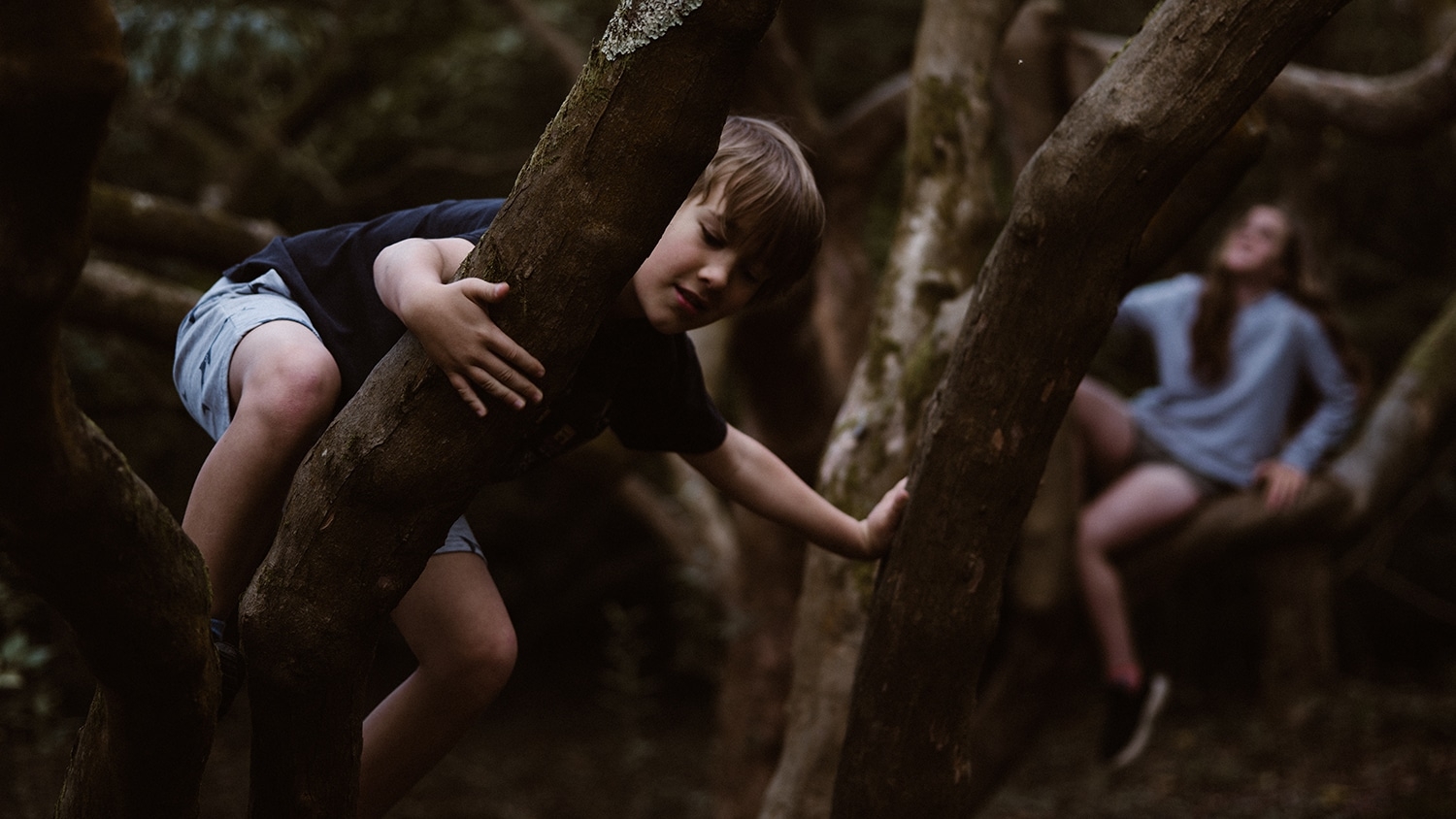
Humans are genetically wired to respond to the natural world. It’s a principle called biophilia — literally translated as “the love of life” — that credits the faint imprint of evolution for the human drive to connect with nature and other living things.
“It’s where we come from,” says Robin Moore. “In an evolutionary sense, we still carry with us this bond with the natural world that we were entirely dependent on for eons. It’s built into our beings.”
In an academic career that began with an architecture degree from University College London in 1962, Moore has established himself as a leader of the movement to understand the role natural environments play in human — and especially child — development. It’s a journey that has taken him from England to the United States, where he earned a master’s degree in city planning from the Massachusetts Institute of Technology in 1966, and where he’s made major contributions as a scholar, researcher, teacher, consultant and author on both coasts.

At NC State, where he’s served as a landscape architecture professor since 1981, Moore co-founded the Natural Learning Initiative with Associate Research Professor Nilda Cosco in the College of Design, melding the behavior-based research techniques he pioneered at MIT and the University of California, Berkeley, with environmental design principles he’s championed in books and academic journals.
As he entered phased retirement last summer, Moore pared down his teaching load and handed off the director’s position at the Natural Learning Initiative to Deepti Adlakha, an expert in both urban planning and public health.
Freed from the press of administrative duties, Moore now has time to plan a future that is likely to include authoring another book or two and continuing to give lectures on his favorite subject: biophilic design. The course he’s teaching at NC State examines how designers can incorporate nature into buildings, neighborhoods and communities to improve residents’ health and well-being.
Moore continues to teach the course entirely online due to the COVID-19 pandemic, and he has been delighted by the turnout. In addition to architecture and landscape architecture students, the course typically attracts parks, recreation and tourism students; graduate students in climate science; as well as urban design and planning students from the University of North Carolina at Charlotte and UNC–Chapel Hill.
“I’ve also had some of those ‘wide’ undergraduates that we have at NC State studying four different things at the same time,” he says.
Childhood Unplugged
Phased retirement also gives Moore an opportunity to look back on his life and his life’s work — and to judge how important that work has become in a society increasingly engaged in virtual spaces and online experiences. Today’s highly structured and tightly scheduled childhood activities, often involving hours of screen time each day, are a world away from Moore’s earliest memories of a childhood spent exploring the open spaces of southwest England.
“I did not grow up with a television,” he says. “I grew up in the woods.”
Depression-era Kent, a county known as the “garden of England,” offered children a sweeping panorama of fields and streams. The outbreak of war with Germany in 1939 put a halt to new home construction, enlarging the options for childhood escapades.

“We had these half-built houses around us, which was just amazing,” Moore says. “I was roaming that landscape by 7 years of age, and my mother had no idea where I was. I had a lot of freedom, and I was pretty fearless.”
It was this experience of unsupervised, unstructured and sometimes risky play that taught Moore his earliest life lessons, such as how to make friends and how to solve problems. As he asserts in his 1986 book, Childhood’s Domain, “playing is learning.”
The lessons he learned roaming the English countryside were refined in the academic halls of America’s elite universities. At MIT, Moore worked with a young professor named Donald Appleyard — a fellow U.K. transplant — whose 1981 book, Livable Streets, compared the effects of vehicle traffic on the quality of life in three urban neighborhoods. Among other things, he found that people living on streets with less traffic had more friends.
Moore and Appleyard were both students of the influential urban planner Kevin Lynch, who pioneered the technique of “mental mapping,” which focuses on the emotions an environment evokes in people. Lynch, in turn, was a student of the legendary architect Frank Lloyd Wright, who advocated a philosophy called “organic architecture” that sought harmony between people and the built environment.
This cascade of influences, which Moore calls “the family tree of a subfield,” gave him a framework for approaching his research on the importance of the environment for child development. As he soon discovered, the path wasn’t particularly well trod.

“If you went to the Harvard library, you would see just yards and yards of literature on child development, but nothing to do with the out-of-doors,” he says. “Absolutely nothing, no writing whatsoever.”
Moore decided if the answers couldn’t be found inside the university, he would take his research into the field — literally. He began by applying a technique called “behavior mapping,” in which he accompanied children as they played so he could observe how they interacted with the natural world.
“It was very seat-of-the-pants,” he says. “While I was doing coursework at MIT, I started hanging out in the streets of Cambridge [Massachusetts], talking to kids, trying to figure out what made them tick, where they went, what they did, and their perception of what they did.”
For his MIT thesis, Moore worked with an African American public housing community in the Lower Roxbury neighborhood of Boston to build a play lab on a vacant site between apartment blocks. Kids playing in the play lab’s unstructured section would stay for hours — for days on end — creating adventure-play scenarios involving the seemingly endless rearrangement of “loose parts” such as scrap items. In the fixed-equipment section of the play lab, which featured equipment such as swing sets and slides, attention spans were measured in mere minutes, he discovered.
“That’s led to a whole career exploring those kinds of relationships at different scales, from citywide to very small neighborhood parks and child care centers,” he says.
From Blacktop to Green Space
After graduating from MIT, Moore accepted a faculty position at UC Berkeley in the San Francisco Bay Area. There, he spearheaded an effort to convert an ordinary asphalt schoolyard at nearby Washington Elementary School into a lush, natural play area called the Environmental Yard. Moore and school principal Herb Wong launched the 1.5-acre project in 1972 with input from children and residents. The site included a natural resource area with ponds, trees and a meadow. The rustic ecosystem offered a stark contrast to downtown Berkeley’s densely populated streetscape. For a time, students even kept farm animals on site, including a half-dozen goats on loan from the local 4-H club.
Moore and Wong, an expert in elementary science education, worked with master teachers, researchers from the Lawrence Hall of Science — a public science center — and UC Berkeley education faculty to create an outdoor learning curriculum for the “whole child.” Describing the Environmental Yard in an academic journal in 1984, they noted that the school’s pupils showed a natural affinity for the reimagined playground as a space full of life outside their classrooms. “Children spent hours observing the animals, writing stories about them, measuring them, researching their history and considering the roles of domesticated animals in general — both pets and animals kept for food,” they wrote. “Classroom connections were boundless.”
In the wake of a 1978 state referendum slashing property taxes — the source of funding for public schools — Moore and several professional partners organized a community initiative called Project PLAE (Playing and Learning in Adaptable Environments). The project engaged local artists and environmental educators in offering summer workshops at the Yard for local children of all abilities, making up for at least some of the experiential learning opportunities lost to budget cuts.
PLAE Inc., the project’s nonprofit umbrella, continues to fund research, programs and educational seminars. And lessons learned in creating the Environmental Yard, recounted in Moore and Wong’s 1997 book Natural Learning, inspired the founding of the Natural Learning Initiative at NC State.
The Environmental Yard broke the mold of the traditional school playground, creating a space that was less structured, less predictable and more like the natural world. Crucially, the design was based not only on what children said they wanted, but also on Moore’s years of observing children at play.
Field Work
In Childhood’s Domain, Moore detailed his research work with children in three disparate English communities in the 1970s: an urban neighborhood in London, a postwar “new town” development 30 miles north of London and an “old city” neighborhood farther north in an industrial area of Staffordshire, once renowned for its pottery.
Moore documented how children in each area spent their free time, often playing in alleys, vacant lots, abandoned buildings and other rough settings. Where city planners saw eyesores, children saw opportunities for adventure that sparked their imaginations.
In his book, Moore described his experiences with one of the children who participated in his research: “Lawrence took me on an action-packed sequence of visits to abandoned buildings and secluded corners of Notting Hill (in London), simultaneously entertaining me with a string of tales about events, real and imaged, associated with the places we were passing through,” Moore wrote. “He and his friends climbed, swung, hid, camped, spied, ambushed, fought battles, escaped — invariably in response to some physical object or attribute of the physical setting: an abandoned building, a garage roof, a weeping willow on vacant land, subways under the street.”

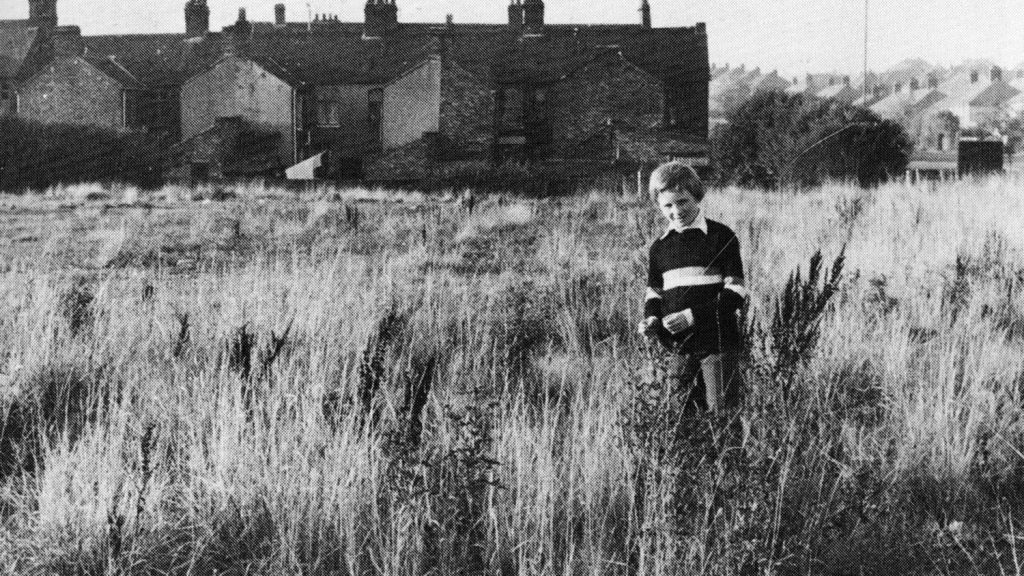
Through his field work, Moore came to appreciate the importance of spontaneous play in the lives of preteens. “Child development does not cease at 5 years old,” he wrote. “Over the course of time, the child’s playful interaction with the environment, and his or her assimilation of worldly experience produces a feeling of competence, a sense of mastery and control over the environment, utilizing it to achieve one’s goals and enrich one’s experience.”
This developmental milestone, now known to child development experts as “agency,” is an important attribute of social and emotional health, he says.
Moore doubts he could have gained those insights from surveys or other traditional research methods. The key was his willingness to explore the children’s spaces with them.
“My attitude is that the subject is the expert, and you’re there to learn what their world is all about,” he says. “So, I tried to mix rigorous quantitative methods — including direct-observation behavior mapping — together with more qualitative methods such as ‘walking interviews’ while exploring the individual subject’s territories together.
“What you find is that children tell you a whole lot more face to face. And especially if you go with them into their space, they can explain why it’s important and what they do there. We need to help people understand that play is a serious business for children.”
Play for All
Based on his observations in England, his work on the Environmental Yard and his experiences as a consultant, Moore began to craft technical guidelines and policy prescriptions to help architects and city planners create more engaging recreational spaces for children. His second book, co-authored with Project PLAE colleagues Daniel Iacofano and NC State alumna Susan Goltsman and published in 1987, is titled Play for All Guidelines: Planning, Design, and Management of Outdoor Settings for All Children.
The book offered practical advice for linking site design with childhood development objectives. A well-designed play environment should offer children opportunities to develop their motor skills, decision-making capacity, social skills and imagination, Moore wrote. But above all, “playing should be fun.”
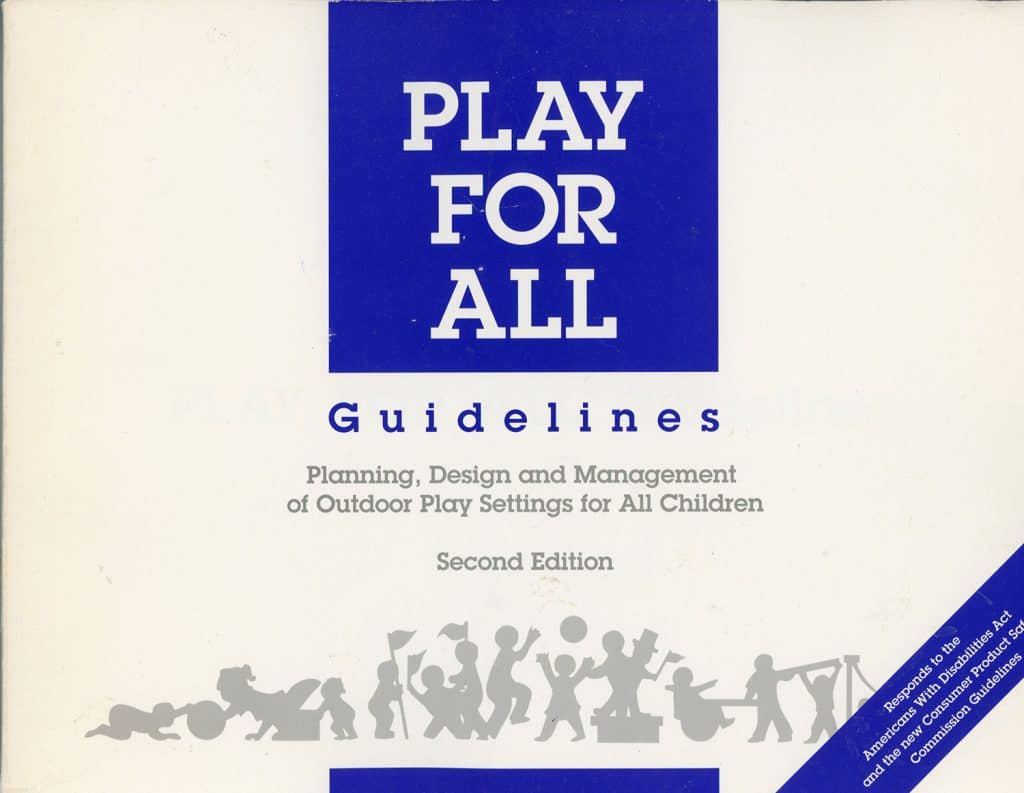
Play for All — developed with the input of 136 professionals in child development, recreation, education, law, landscape architecture and park management — covered virtually every aspect of designing outdoor play settings, including equipment, pathways, signage, ground cover, trees and vegetation, water features and even animal care.
At a time when planners were turning to the use of standardized play equipment made of hard plastic, Moore offered a radical alternative: design for diversity and access. “A children’s play environment of quality is more than a piece of play equipment set neatly into a circle of sand in a park, schoolyard or residential development,” he wrote. “A good play and learning environment must be designed as a range of settings carefully layered on the landscape.”
Moore advised against what he called “the official stamp of tidy overdesign.” Too often, he wrote, planners left little to the child’s imagination. “The child must be in control of some or all of the environment,” he said, reflecting on the MIT study and what he learned from the Lower Roxbury kids.
That meant limiting the use of prefabricated play equipment. “Avoid making play areas that are entirely made up of realistic play objects like trains,” he wrote. “A pile of rocks, sand areas, and geometric structures all provide the opportunity for imaginative play. Undefined structures become whatever the child wants them to be, and the child will then create the story that goes with the imagined setting.”

In the years before passage of the Americans With Disabilities Act in 1990, Play for All championed the rights of children of all abilities to access play opportunities. For Moore, that went beyond simply advocating for the construction of wheelchair ramps.
“Equipment should be accessible, but must be designed for children, not wheelchairs,” he wrote. “The most significant aspect of making a piece of equipment accessible is to understand that children with disabilities need and enjoy many of the same challenges as children without disabilities.”
Play for All provided practical advice for designing play spaces accessible to people (including children, accompanying adults and grandparents) with a wide range of limitations — physical, mental and developmental. For example, a park could install wind chimes to serve as an audio cue for a particular landmark or use different textures on pathways to mark a crossroads.
Risk and Reward
As much as he was ahead of his time when it came to accessibility, Moore is decidedly old school on the issue of risk management. While a parent’s first instinct may be to bubble-wrap their child against bumps and bruises, and a recreation department’s primary concern is legal liability, Moore believes facing challenges and gaining agency are essential to healthy development.
“We have no way of learning without taking risks,” he says.
He advocates giving children opportunities to push their boundaries and enhance their self-confidence. And he differentiates between dangerous activities and risky ones. “A hazard is something a child does not see,” he wrote in Play for All. “A challenge is a risk the child can see and chooses to undertake or not. Children need to take risks to challenge their skills and courage. A risk-free play area is neither possible nor desirable.”
Although Moore wrote Play for All and Childhood’s Domain before the personal computer revolution, he worried that television and the mass marketing of consumer goods was alienating children from the natural world. “There is danger that children in the West are becoming the passive receivers of predigested messages from secondary sources, instead of being agents for self-initiated interactions with the living world around them,” he wrote in Childhood’s Domain. “It will be interesting to see how microcomputers — which potentially offer a high degree of user control — will affect this complex issue.”

The ensuing four decades have done little to ease his concerns.
“As recently as the 1970s we had these amazing childhoods that just don’t exist anymore,” he says. “Children are losing contact with nature in their daily lives.”
Moore’s work with the Natural Learning Initiative at NC State has been his response to the increasing proliferation of virtual spaces and computer-generated experiences in children’s lives. He’s not a Luddite who wants to smash the gears of modern technology, but he’s mindful of the consequences of breaking the human bond with the natural world.
“How do you bridge that need to be engaged with the natural world and to understand human dependency on the biosphere and at the same time embrace the new digital age as a phenomenal tool and an added value to direct experience?” he asks. “I don’t believe you can substitute the real living ecosystem out there with anything that’s online. There’s always going to be something essential that’s missing.”
Back to Nature
At the Natural Learning Initiative, Moore and co-founder Cosco have focused on creating cost-effective, natural outdoor learning environments at child care centers, public parks, schools, botanical gardens and other sites. They also provide professional development opportunities for design practitioners, educators and allied professionals, and they maintain an online resource library called the Green Desk.
In 2007 they launched a project called Preventing Obesity by Design, or POD, with funding from the Blue Cross and Blue Shield of North Carolina Foundation. Led by Cosco, the project’s goal was to design outdoor demonstration spaces, serving children from ages 6 weeks to 5 years, that were so engaging they would “irresistibly ‘pull’ children and teachers outside to enjoy higher levels of physical play activity, hands-on gardening and outdoor learning.”
Over the years, POD has provided grants and technical assistance to improve outdoor learning environments at more than 200 child care facilities in North Carolina. The secret to their success is a process called “naturalization,” which essentially involves returning an outdoor space to its natural state as much as possible. “We bring nature back to places where it’s been removed,” Moore says. “It’s not nature that you find; it’s nature that you restore.”
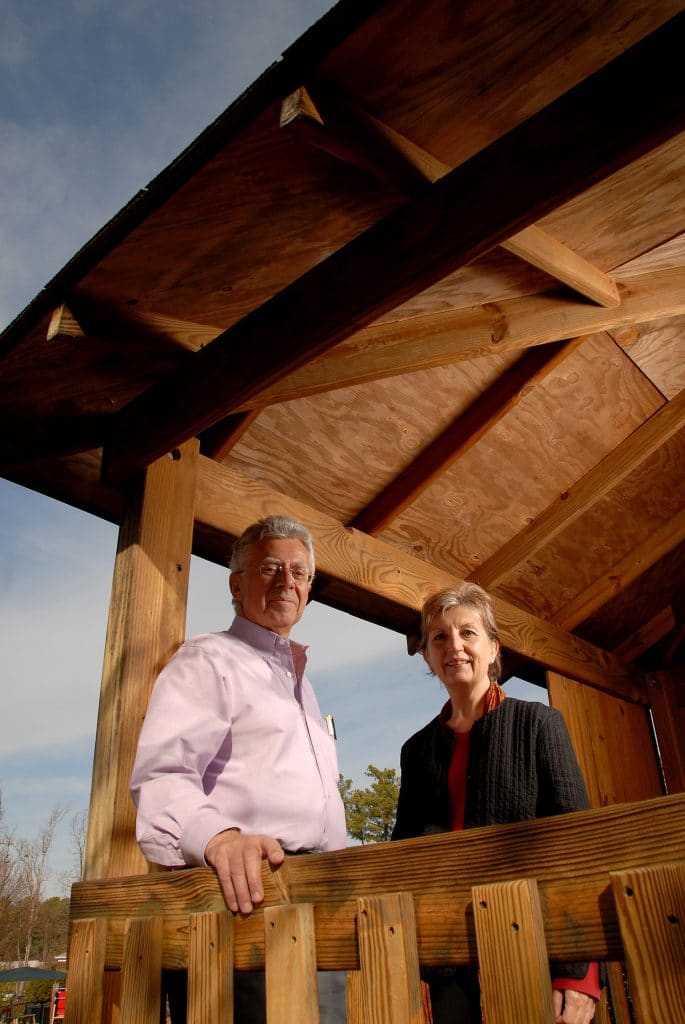
Typically, a Natural Learning Initiative team working with child care providers leads an effort to transform a bare play area into a multifaceted landscape, with herb and vegetable gardens, a shade garden, fruit trees, a teepee, a natural building area, an outdoor classroom, a stage, learning stations, exploration paths, play equipment and, perhaps most importantly, small, comfortable places where children can relax.
The Natural Learning Initiative has done much of its larger-scale pioneering urban work over the past 22 years in collaboration with Michael Van Valkenburgh Associates, a landscape architecture firm with offices in Brooklyn and Cambridge, Massachusetts.
Moore and Cosco worked with Van Valkenburgh on the master plan for Dix Park, the 308-acre site of a former state hospital near the NC State campus, and they are assisting with plans for the recently approved 18-acre Gipson Play Plaza at Dix Park. They also worked with Van Valkenburgh Associates on Teardrop Park and Union Square Playground, both in Manhattan, and Brooklyn Bridge Park on the East River waterfront.
At Teardrop Park, the design team created an environment that serves all ages and abilities, guided by the concept of “the park as playground.” In an article praising the park on its opening in September 2004, The New York Times said, “By the time you have found a perch on the storybook hill, stumbled through the boggy marsh, ascended the glistening wall of craggy bluestone, scuttled through a notch in the limestone boulders and — attention, first graders! — slid into the sand pit, you will be amazed that you have covered only 1.9 acres.”
A lifetime’s work — and occasional validation from the press or his peers — gives Moore hope that the human drive to connect with nature in places like Teardrop Park and the Environmental Yard will survive the pressures of the digital age. The stakes are too high to consider the alternative.
“The uniquely human skills of tool making, problem solving and decision making are learned competencies. To develop in the right ethical direction, they must be rooted in childhood opportunities for fully experiencing the Earth, and for understanding the influence of humankind upon it,” Moore says.
“How will we learn to live collaboratively with the planet, otherwise?”
This post was originally published in NC State News.

